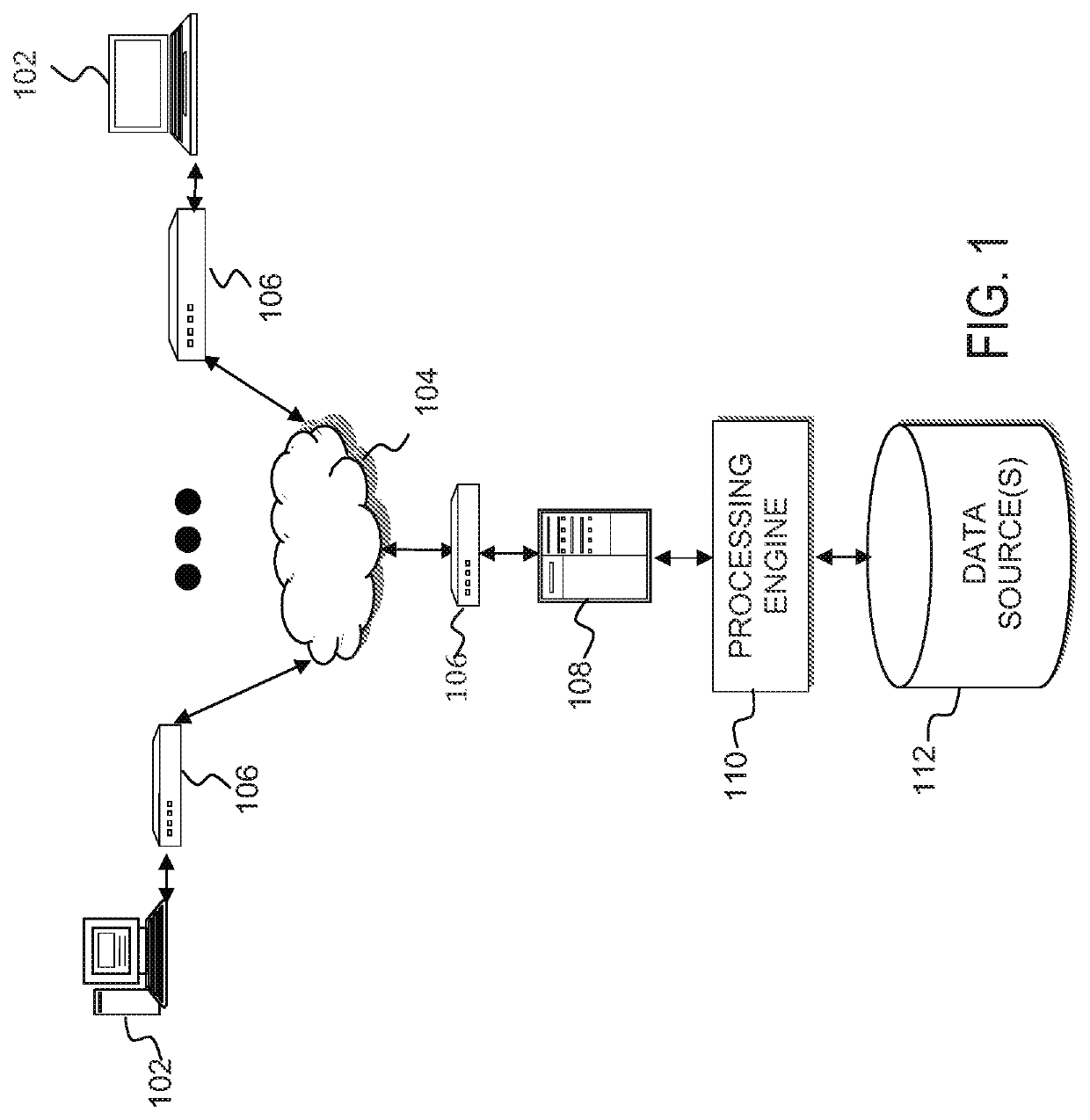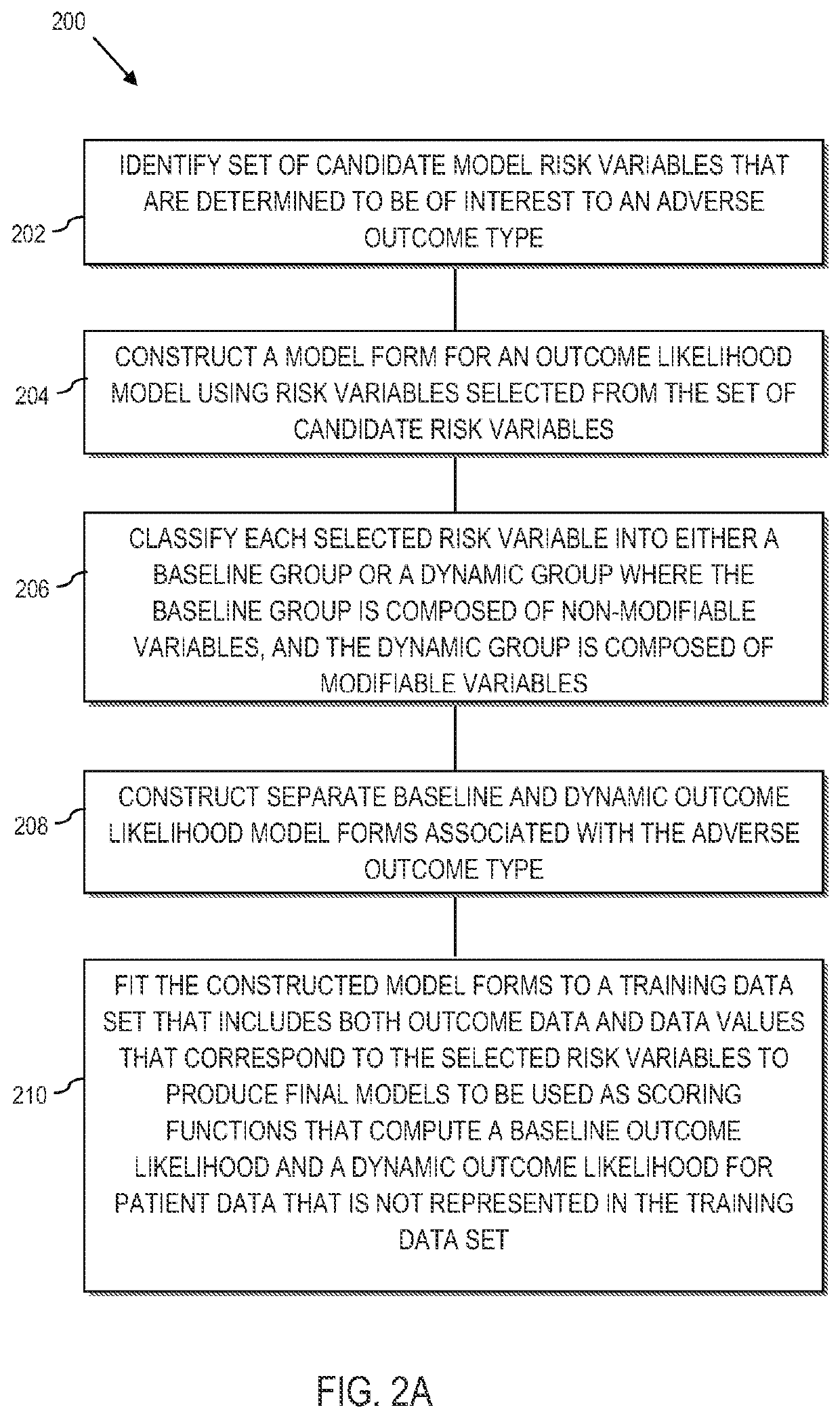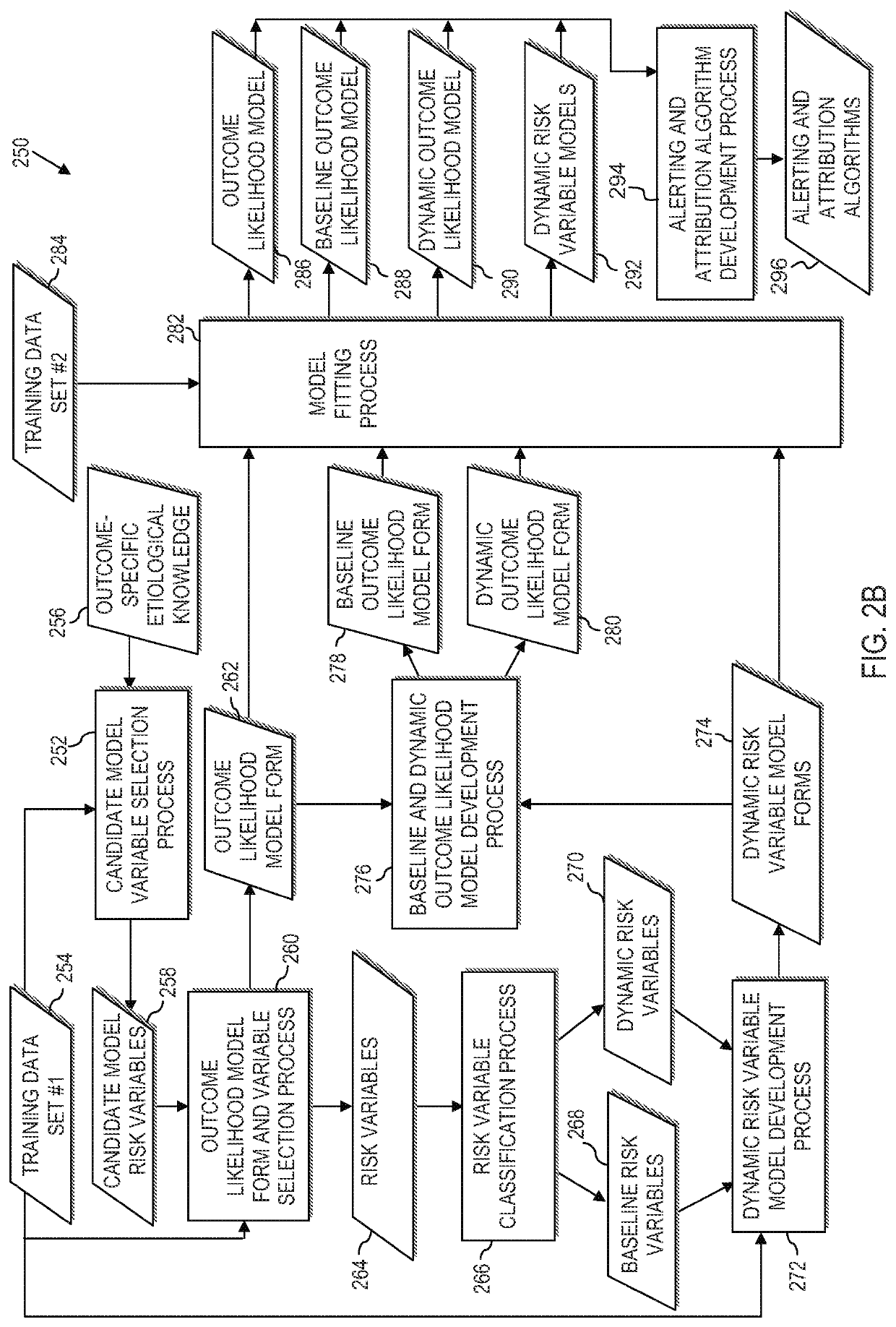Clinical predictive analytics system
a predictive analytics and clinical technology, applied in medical informatics, health-index calculation, medical simulation, etc., can solve the problems of adverse health outcomes, adverse outcomes, and patient receiving medical care to suffer from adverse health outcomes, so as to facilitate intervention
- Summary
- Abstract
- Description
- Claims
- Application Information
AI Technical Summary
Benefits of technology
Problems solved by technology
Method used
Image
Examples
Embodiment Construction
[0025]According to various aspects of the present disclosure, systems, methods and computer program products are provided that analyze data from various sources and predict the baseline and dynamic likelihoods of an adverse outcome for patients that receive medical attention. Based upon an analysis of available data, clinicians are provided with sufficient contextual information and preventative action decision-making support to facilitate effective intervention.
[0026]According to further aspects of the present disclosure, a modeling platform is used to construct an outcome likelihood model and an alerting algorithm. The model and algorithm are utilized to analyze electronic medical patient information and predict a baseline likelihood and a dynamic likelihood that a predetermined adverse health outcome (i.e., a specific event occurring within a specified future time period), will occur. The availability of health risk information may be maximized by imputing missing risk factors. I...
PUM
 Login to View More
Login to View More Abstract
Description
Claims
Application Information
 Login to View More
Login to View More - R&D
- Intellectual Property
- Life Sciences
- Materials
- Tech Scout
- Unparalleled Data Quality
- Higher Quality Content
- 60% Fewer Hallucinations
Browse by: Latest US Patents, China's latest patents, Technical Efficacy Thesaurus, Application Domain, Technology Topic, Popular Technical Reports.
© 2025 PatSnap. All rights reserved.Legal|Privacy policy|Modern Slavery Act Transparency Statement|Sitemap|About US| Contact US: help@patsnap.com



